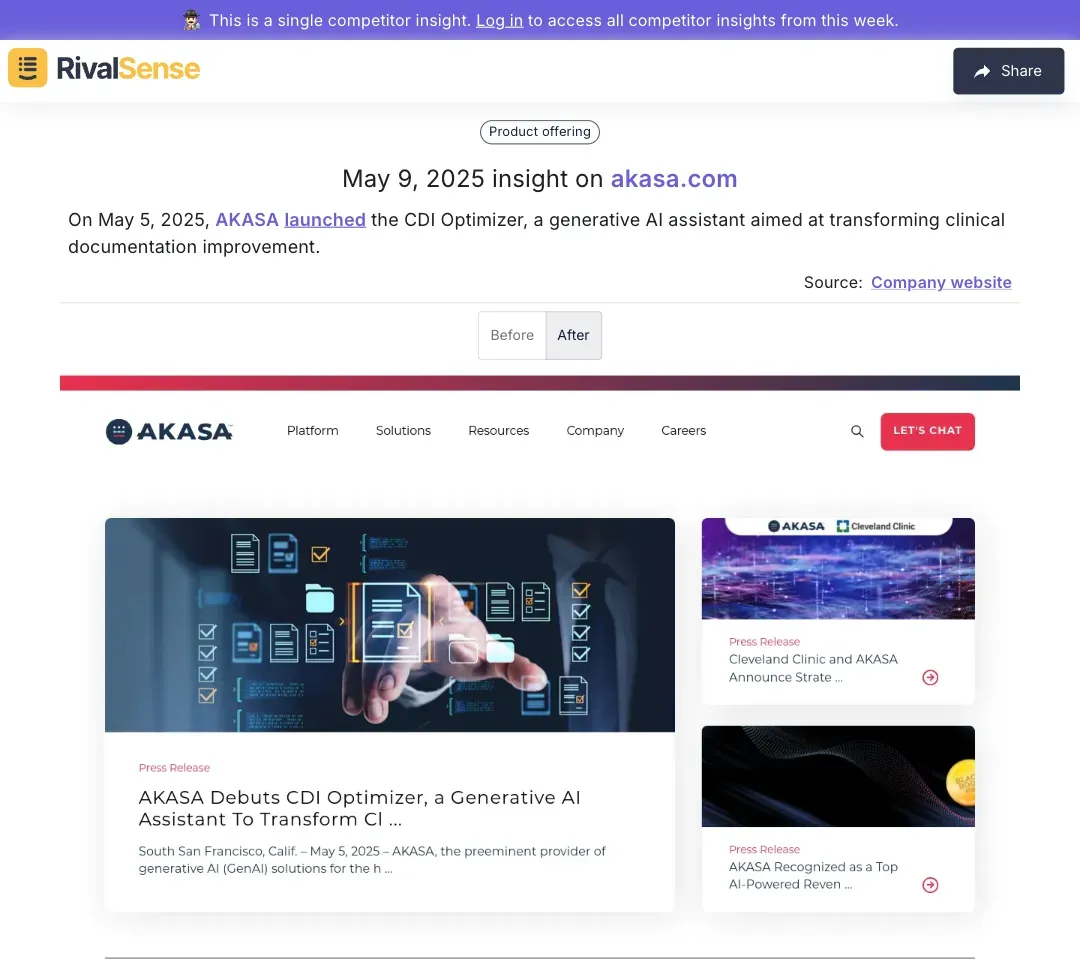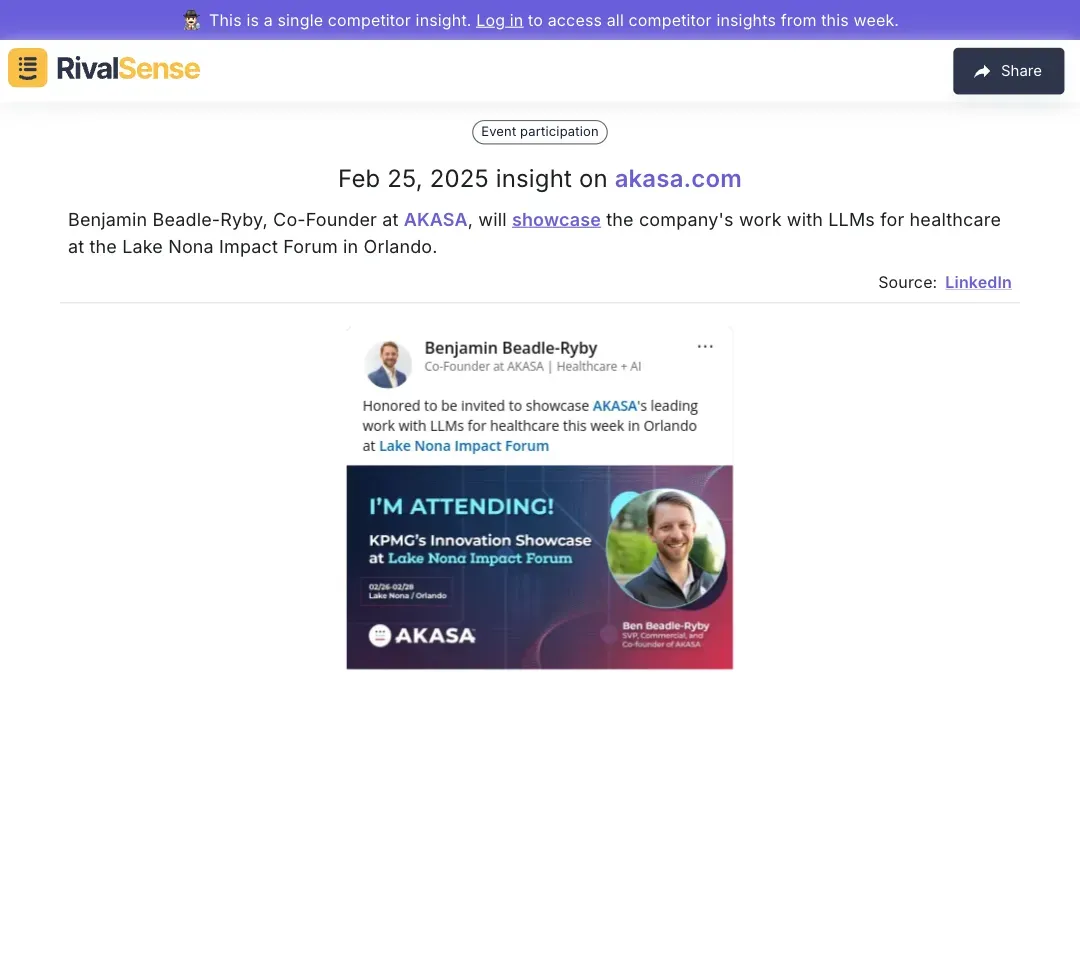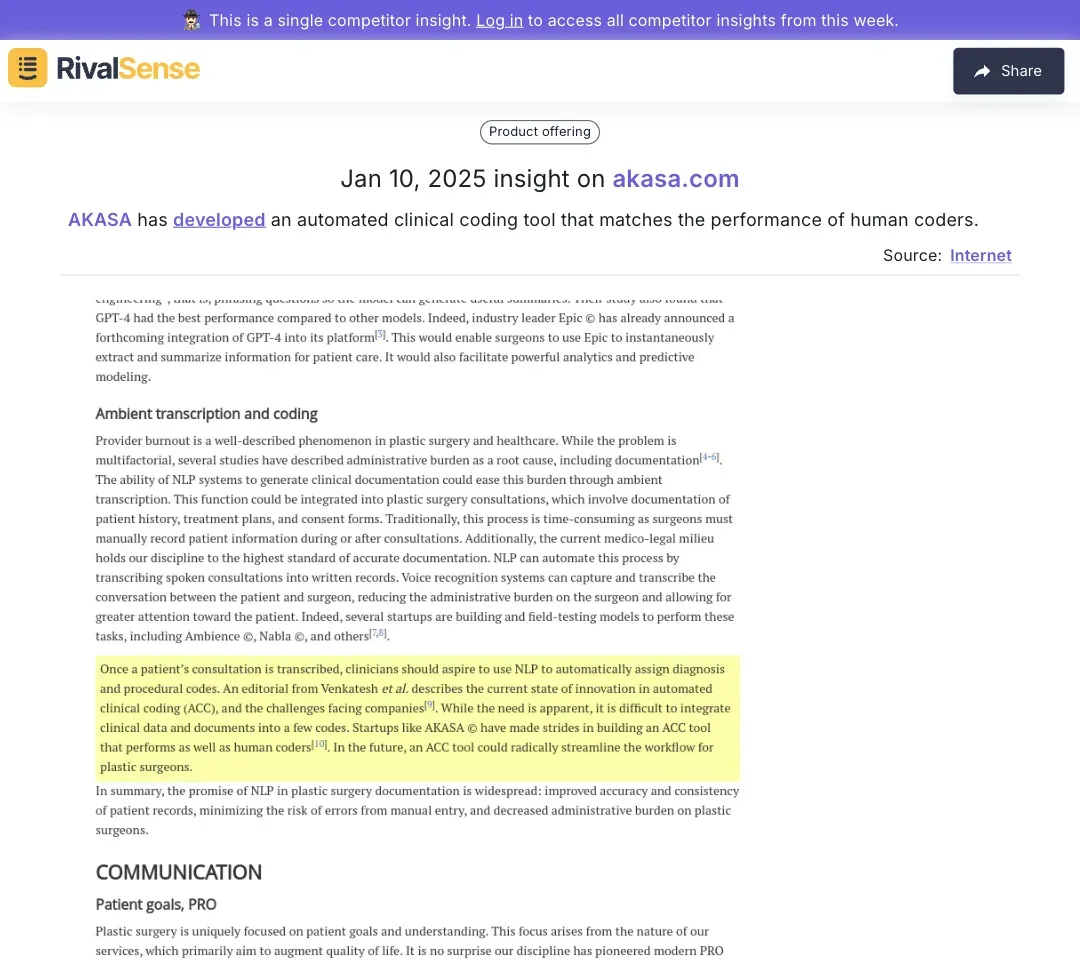AKASA vs. Competitors: AI in Healthcare Revenue Cycle Analysis
The integration of Artificial Intelligence (AI) into healthcare revenue cycle management (RCM) is revolutionizing how providers handle billing, coding, and claims processing. By automating repetitive tasks and reducing human error, AI enhances efficiency, accuracy, and financial outcomes. This transformation is particularly critical in clinical documentation and coding, where precision directly impacts revenue and compliance. Innovations in AI-driven tools enable healthcare organizations to streamline workflows, reduce denials, and accelerate reimbursements.
AKASA stands at the forefront of this innovation, leveraging AI to optimize revenue cycle operations. Their solutions automate complex processes like claim scrubbing and denial management while providing actionable insights. For healthcare leaders adopting AI in RCM, here are practical steps:
- Assess Your Needs: Identify pain points like high denial rates or slow claim processing.
- Evaluate AI Solutions: Prioritize platforms offering scalability, integration ease, and proven results.
- Pilot Before Scaling: Start small to measure ROI before full deployment.
- Train Your Team: Ensure staff can maximize AI tool benefits.
- Monitor and Adapt: Continuously track metrics and adjust strategies.
Embracing AI allows providers to boost revenue cycle efficiency and refocus on patient care.
Innovative AI Solutions in Healthcare: A Closer Look
Generative AI assistants are transforming clinical documentation improvement (CDI) by identifying revenue-impacting gaps. Automated coding tools now match human coder performance, reducing errors and speeding up billing. Large language models (LLMs) advance revenue cycle analysis by predicting denials and suggesting fixes.
Practical implementation tips:
- Integrate AI tools with EHR systems for real-time documentation feedback 🚀
- Use LLMs to analyze historical denial data for proactive resolution
Checklist for AI tool adoption:
- Verify compliance with current coding standards
- Train staff on interpreting AI suggestions
- Monitor accuracy rates monthly
🔍 Why Tracking Product Launches Matters

AKASA's May 5, 2025 launch of the CDI Optimizer—a generative AI assistant for clinical documentation—showcases rapid innovation in RCM. Monitoring such launches helps benchmark your solutions against emerging market standards and identify partnership opportunities.
Learning from Competitor Innovations
Continuous innovation is essential in healthcare AI, with players like SmarterDx and Janus advancing revenue integrity tools. Benchmarking against competitors reveals enhancement opportunities while showcasing innovations at forums builds thought leadership.
Actionable steps to stay competitive:
- Benchmark Quarterly: Compare your AI capabilities against rivals
- Showcase at Events: Present at conferences like HIMSS to elevate visibility
- Develop Human-Matching Tools: Focus on AI exceeding human task performance
🔍 Why Tracking Events Matters

AKASA Co-Founder Benjamin Beadle-Ryby presenting LLM advancements at the Lake Nona Impact Forum (May 2025) demonstrates strategic visibility. Monitoring competitor event participation reveals industry hotspots and informs your own engagement strategy.
Competitiveness Checklist:
- ✅ Attend 2+ major industry events annually
- ✅ Invest in R&D for AI accuracy/scalability
- ✅ Gather client feedback to refine offerings
The Future of AI in Healthcare Revenue Cycle Management
Hyper-automation will dominate future RCM, with AI streamlining every step from registration to claims. Predictive analytics will preempt billing errors, while NLP improves payer-provider communication transparency. AI's potential to slash administrative burdens frees staff for patient care.
Preparation roadmap:
- Invest in AI Training: Equip teams with implementation skills
- Adopt Scalable Solutions: Choose cloud-based RCM platforms
- Prioritize Data Security: Ensure HIPAA compliance
- Monitor Trends: Track AI advancements religiously
🔍 Why Tracking Innovations Matters

AKASA's human-matching clinical coding tool exemplifies performance breakthroughs. Tracking such innovations provides early warnings about shifting industry benchmarks, allowing timely R&D adjustments.
Conclusion: Embracing AI for Competitive Advantage
AI's transformative impact on healthcare RCM—through automation, error reduction, and efficiency gains—delivers undeniable competitive advantages. Early adopters already reap benefits like streamlined workflows and cost savings.
Actionable adoption steps:
- Identify AI-addressable revenue cycle pain points
- Research solutions comparing AKASA and rivals
- Launch pilot programs to measure impact
- Train teams for effective AI utilization
🚀 Ready to decode competitor moves?
RivalSense tracks product launches, events, and innovations—delivering actionable insights in weekly reports. Try RivalSense for free and get your first competitor analysis today!
📚 Read more
👉 Competitor Tracking on Autopilot: How RivalSense Delivers Effortless Competitive Intelligence
👉 Why One-Time Competitor Research Isn't Enough: The Case for Continuous Monitoring
👉 How to Track Competitor Engagement: A Strategic Guide for Business Leaders
👉 Mastering Competitive Intelligence in Medical Aesthetics: A Strategic Guide
👉 How Cisco's XDR Innovation Spurred Competitor Security Upgrades
